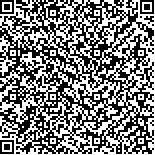杨学花,卫哲,周赞华.电针调控L1CAM表达在阿尔茨海默病神经保护中的作用[J].中华物理医学与康复杂志,2023,45(3):193-198
扫码阅读全文

|
| 电针调控L1CAM表达在阿尔茨海默病神经保护中的作用 |
|
| |
| DOI:10.3760/cma.j.issn.0254-1424.2023.03.001 |
| 中文关键词: 阿尔茨海默病 电针 L1CAM Morris水迷宫 |
| 英文关键词: Alzheimer′s disease Electroacupuncture Cell adhesion molecule L1 Morris water maze |
| 基金项目:浙江省自然科学基金(LY20H270001);浙江省医药卫生科技项目(2021RC148);丽水市本级重点研发计划项目(2022ZDYF21);浙江省大学生科技创新活动计划项目(2022R434A014);国家大学生创新创业训练计划项目(202210352003) |
|
| 摘要点击次数: 4278 |
| 全文下载次数: 4450 |
| 中文摘要: |
| 目的 观察电针干预对阿尔茨海默病小鼠学习记忆能力及神经细胞粘附分子L1(L1CAM)表达的影响。 方法 采用随机数字表法将30只雄性APP/PS1小鼠分为模型组、电针组及非穴组,每组10只小鼠,另取10只C57BL/6小鼠纳入对照组。电针组小鼠给予电针刺激百会、肾俞穴,电刺激频率50 Hz,连续波,电流强度1 mA,每天刺激1次,连续干预14 d;非穴组小鼠在百会、肾俞穴附近给予电针刺激,其它操作均与电针组相同;模型组、对照组小鼠均继续常规饲养,未给予电针等特殊处理。于干预后采用Morris水迷宫实验检测各组小鼠行为学改变,选用Western blot技术检测各组小鼠海马组织中L1CAM、PTEN及p53蛋白表达水平。 结果 与对照组Morris水迷宫定位航行实验结果比较,模型组在第1,2,3,4,5天时的逃避潜伏期均显著延长(P<0.05)。与模型组结果比较,电针组在第2,3,4,5天时逃避潜伏期均显著缩短(P<0.05)。与模型组比较,电针组L1CAM蛋白表达量明显上调(P<0.05),PTEN及p53蛋白表达量均显著下调(P<0.05)。与电针组比较,非穴组在第2,3,4,5天时逃避潜伏期均明显延长(P<0.05),L1CAM蛋白表达量下调(P<0.05),PTEN及p53蛋白表达量均显著上调(P<0.05)。通过相关性分析发现,实验小鼠逃避潜伏期与L1CAM表达水平呈负相关性(P<0.05),与p53、PTEN表达水平呈正相关性(P<0.05)。 结论 L1CAM参与实验小鼠学习记忆过程,电针穴位可改善AD小鼠学习记忆功能,其作用机制可能与促进海马组织中L1CAM蛋白表达、抑制PTEN及p53蛋白表达有关。 |
| 英文摘要: |
| Objective To observe any effect of electroacupuncture on the expression of L1 cell adhesion molecule (L1CAM) in mice modeling Alzheimer′s disease (AD) and also any effect on learning and memory. Methods Thirty male APP/PS1 mice were randomly divided into a model group, an electroacupuncture (EA) group, and a no acupuncture (NA) group, each of 10. All the animals were modeled as AD. Ten C57BL/6 mice served as a control group. The mice in the EA and NA groups were given continuous 50Hz EA at a current intensity of 1mA at and near the Baihui (GV20) and Shenshu (BL23) acupoints, respectively, once a day for 14 days, while the other two groups were not given any EA. The mice in the model and control groups continued to be routinely fed without any special treatment such as electroacupuncture. After the intervention, any behavioral changes were evaluated by using a Morris Water Maze, and the expression of L1CAM, PTEN and p53 protein in the hippocampus of each group was detected using western blotting. Results Compared with the control group, the escape latency in positioning navigation experiments was significantly longer in the model group on the first 5 days of Morris Water Maze testing. Compared with the model group, the escape latency was significantly shorter in the EA group on days 2 to 5 of the Morris Water Maze testing, and the expression of L1CAM had increased significantly in the electroacupuncture group compared with the model group while PTEN and p53 expression had decreased significantly. The average escape latency of the NA group was significantly longer than that of the model group on days 2 to 5 of the Morris Water Maze testing. The average L1CAM expression in the NA group had decreased significantly, and the expression of PTEN and p53 protein had increased significantly more than in the EA group. The escape latency was negatively correlated with L1CAM expression but positively correlated with p53 protein and PTEN expression. Conclusion L1CAM is involved in learning and memory processes, at least in mice. Electroacupuncture can improve the learning and memory of mice modeling Alzheimer′s, which may be due to its promoting the expression of L1CAM and inhibiting the expression of PTEN and p53. |
|
查看全文
查看/发表评论 下载PDF阅读器 |
| 关闭 |
|
|
|